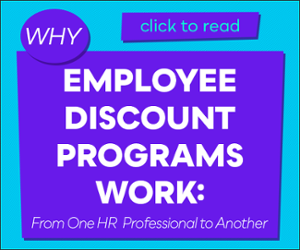Concerned about your 2025 benefits package? You aren’t alone.
The quest to deliver quality health care to employees is more challenging than ever in a market where costs are rising and coverage is declining. And just when we thought healthcare couldn’t get more complicated, COVID came along.
Throughout everything, one fact remains consistent: the cost of healthcare is far and away the top grievance making employees dissatisfied with their health plans.
Over the past 10 years, the average premium has risen by 47%, according to the Kaiser Family Foundation. Worse still, early indicators point to another 8% increase in 2025 (this comes after a 7% increase in 2024, 6% in 2023, 5.5% in 2022... See a pattern?) You can read about the many reasons that healthcare costs continue to rise in our article: Employee Benefits Costs: 14 Reasons Why Rates Will Increase.
The constant uptick in rates is wearing on employees and their employers.
Human Resource professionals in organizations of all sizes are running themselves ragged for months during open enrollment season in effort to deliver a comprehensive employee benefits package. But what's the best strategy? Most have a budget to stick to and unless they find a money-bearing tree, that’s not changing any time soon.
Looking to businesses nationwide, (all of which are facing the same challenges) we’ve highlighted 10 strategies that HR professionals can use to counteract the effects of rising healthcare costs. Some may yield better results than others – all depending on the unique needs of your organization. One thing is clear, though. HR is under pressure to prevent soaring premiums from decimating employee morale.
How To Deal With Rising Health Insurance Prices
1. Continually Educate Employees About Their Benefits
Employees who don’t understand their benefits aren’t able to fully assess their value. After all, a benefit is really only as good as your employees’ appreciation for it.
 Too often employers assume their employees know more about the way health insurance works than they actually do. This misunderstanding can lead to costly misuse of benefits – such as unnecessary emergency room visits. Remember, in the eyes of your employees, YOU are the expert. Guide them through the process to ensure their understanding so they recognize the value in what you’re providing.
Too often employers assume their employees know more about the way health insurance works than they actually do. This misunderstanding can lead to costly misuse of benefits – such as unnecessary emergency room visits. Remember, in the eyes of your employees, YOU are the expert. Guide them through the process to ensure their understanding so they recognize the value in what you’re providing.
On average, employers contribute between 73-83% of coverage premiums, and yet, their employees tend to underestimate their employer’s contributions, believing their own burden to be more than it actually is. The majority of employers recognize how concerned their employees are about the affordability of cost sharing.
Find opportunities to communicate to your workforce the size of the contribution your organization makes to help fund employee health insurance. They’ll be more likely to appreciate the team effort taking place to deliver quality benefits. Be transparent about why costs are what they are and teach them how to do their part in keeping them down.
After all, knowledge is power, right?
2. Implement Strategies to Afford Specialty Drugs
Expensive specialty medications known as “biologics” make up only 2% of available drugs on the market, yet they account for 37% of U.S. drug spending. Many employers are encouraging their people to seek more economic options of receiving these medications to help keep costs down.
These drugs cost so much because of the way they’re made and how they’re administered. A good number of these drugs are given through injections which are much more affordable if received at a doctor’s office rather than a hospital. Often, it’s even possible to receive the injection at home which can provide even more cost savings. In addition, some organizations select health plans that require prior authorization for these medications in an effort to ensure drugs are prescribed appropriately and only when medically necessary.
A growing number of employers are selecting prescription drug plans that consist of 4 or more tiers. The top tier includes the most expensive specialty drugs. This helps keep more drugs affordable as employees more often pay for only what they’ll use.
Employers should also encourage their employees to choose generic drugs when given the option as they are significantly more cost-friendly and end up saving everyone money. The FDA estimates generic drugs have saved consumers over $2.2 trillion over the last decade.
3. Create Company Wellness Plans
Corporate health and wellness programs are proving to be a great way to drive health care costs down for employers as they encourage employees to make healthy choices and often reward them for doing so. These lifestyle behaviors play a big part in minimizing the number of large claims and overall health care spending. In fact, following four healthy lifestyle habits – never smoking, maintaining a healthy weight, eating a balanced diet and exercising regularly – can create up to an 80% reduction in the risk of developing a handful of the most common chronic conditions.
A survey conducted by United Healthcare showed employees who participate in wellness plans attribute great successes to these programs. 67% of participants reported reduced bodyweight, 23% quit smoking or nicotine use and 30% said a disease was detected earlier because of their involvement in a wellness program.
The success is also spilling over into workplace output as 62% of participants in wellness programs say their productivity on the job has improved and 56% have used fewer sick days.
4. Promote Telehealth Options
 Telemedicine was already pretty popular pre-COVID. But it has absolutely skyrocketed after the government issued stay-at-home orders in the spring of 2020, according to the American Medical Association. One report estimated that physicians saw between 50 and 175 times more patients via telehealth than they did prior to the pandemic.
Telemedicine was already pretty popular pre-COVID. But it has absolutely skyrocketed after the government issued stay-at-home orders in the spring of 2020, according to the American Medical Association. One report estimated that physicians saw between 50 and 175 times more patients via telehealth than they did prior to the pandemic.
Many experts expect to see telehealth usage continue to flourish. Among medical professionals whose specialties are well suited to telehealth, the majority reported they were able to deliver similar quality of care. In 2024, some saw as many as 50% of their patients through telehealth. This could include live video appointments with providers via computer or smart phone app, nurse coaching over the phone through the insurance provider and remote patient monitoring.
Telehealth appointments typically cost about $43-50 compared with $176 for an in-person doctor’s office visit – so the savings are pretty substantial.
5. Fund Consumer Driven Health Plans
An increasing number of organizations are implementing Consumer Driven Health Plans (CDHPs) as a way to keep premiums down. CDHPs require consumers to take a high level of responsibility for their own healthcare choices. Employers typically fund a spending account – either a Health Reimbursement Arrangement (HRA) or Health Spending Account (HSA) – and then provide a high-deductible health insurance plan so employees are covered when major health care is needed.
This approach helps lower premiums but may actually increase employees’ costs when it comes time to use their insurance. Analyzing the potential risks and benefits of this approach will help determine if this is the right course for your organization.
6. Contract Directly with Providers
Some large companies are taking advantage of their size and negotiating power by going straight to facilities and arranging direct relationships. Walmart has famously negotiated direct relationships with healthcare providers for decades, expanding to even include heart and spinal surgeries at no cost to workers. Since then, other major brands like Boeing, Intel, Whole Foods and more have followed suite.
For example, The Walt Disney Company launched two new high-performance networks by pursuing direct relationships with Orlando Health and Florida Hospital. Through their negotiations, Disney sought to improve the employee experience and gain more control over costs by eliminating the middleman and interacting directly with providers on their employees’ behalf.
7. Offer On-Site Clinics
Nearly 30% of large organizations now provide private clinics inside their buildings or nearby as a means of lowering costs. Often employees and their families can be treated in the clinic at no cost and without using paid time off. That, combined with the convenient location, encourages a larger percentage of employees to get regular checkups and tend to their health care needs before more costly procedures and treatments are needed. They also seem to help keep employees who don’t want to take time off work to visit the doctor out of the emergency room where the cost for care can be enormous.
Plus, on-site clinics aren’t just for large companies anymore, as medium and small employers are finding the benefits of providing basic health services at or near their workplace. Healthier employees leads to less health care spending and lower insurance prices.
8. Shift More of the Cost to Employees
Many organizations are increasing the employee portion of their health benefit costs as a way of making them more aware of the impact their behavior has on premiums. In one SHRM survey, 43% of responding employers said in an effort to keep costs down for their organization they raised deductibles or cut coverage.
Some feel that placing more of the cost burden on employees helps them be smarter healthcare consumers. On the other hand, many employers are thinking twice about this strategy as it frequently erodes employee morale which introduces its own set of costly problems. More recently, companies are turning to alternative health plans or high-performance networks that keep costs low by directing employees to low-cost providers that still offer quality service.
9. Include Flexibility in Your Benefits
Flexibility in scheduling is all the rage right now, with employees clamoring for flexible hours, working arrangements, etc. People thrive when given autonomy to work in the way that works best for them. For the same reason, some employers are finding success putting their employees at the helm of their own personal benefits package. Rather than guess which ones will win their employees’ hearts, they offer a variety of inclusive benefits and let each employee choose which ones they like most.
One Public Relations firm, North 6th Agency (N6A), rolled out a revolutionary approach to offering benefits to their employees. They provide a baseline of benefits to all workers and then have a system where employees earn points they use to “buy” their favorite perks and lifestyle benefits. So far it has earned high marks with their employees. Among the most popular perks have been gym memberships, one-on-one nutritionist consulting and 6 months of meals where the company pays for the employee’s breakfast, lunch and dinner for half the year, according to Matt Rizzetta, CEO of N6A.
10. Add Benefits You WANT Them to Use
 Some benefits, like health care, are a cost to your organization each time an employee uses them. Many companies believe they have to cut back on the entire benefits package in order too compensate for increasingly expensive health insurance premiums. Others have found that it is better to ADD benefits that add value, rather than subtract. For example, employee discount programs, help employees stretch their paychecks, which seems to soften the blow of those rising health care costs. Even better, discount programs and other lifestyle benefits get to be enjoyed in a positive context, whereas healthcare benefits are mostly for when people are sick or injured.
Some benefits, like health care, are a cost to your organization each time an employee uses them. Many companies believe they have to cut back on the entire benefits package in order too compensate for increasingly expensive health insurance premiums. Others have found that it is better to ADD benefits that add value, rather than subtract. For example, employee discount programs, help employees stretch their paychecks, which seems to soften the blow of those rising health care costs. Even better, discount programs and other lifestyle benefits get to be enjoyed in a positive context, whereas healthcare benefits are mostly for when people are sick or injured.
Data shows these simple, money-saving perks can deliver just what your company culture needs to keep morale high and employees engaged.
How to Pick the Right Benefits for Your Organization
These are just a few ideas for dealing with the frustrating rise in health care costs.
The real question is: what benefits are right for YOUR organization and your people? Do you seek solutions that can be incorporated directly into your health care offering? Are you in desperate need of something to pick up the pieces of broken morale caused by ever-increasing costs?
Whatever the answer, if it comes with a price tag, it can be challenging to make the case for extra corporate spending in your benefits package. After all, ROI can be more difficult to measure than it is in other areas of your business. Yet, there’s no denying the obvious return on a benefits package that’s made of the right stuff. It’s hard to pin a value on having talented people engaged in your organization’s success.
The key for HR professionals is knowing what you need a benefit to accomplish and finding a way to track whether it’s doing its job.
Take your benefits seriously. Evaluate them with the same rigor you would any other investment the company makes. Set goals, invest time, collect employee feedback and act on what they’re telling you.
You may also want to check out:







